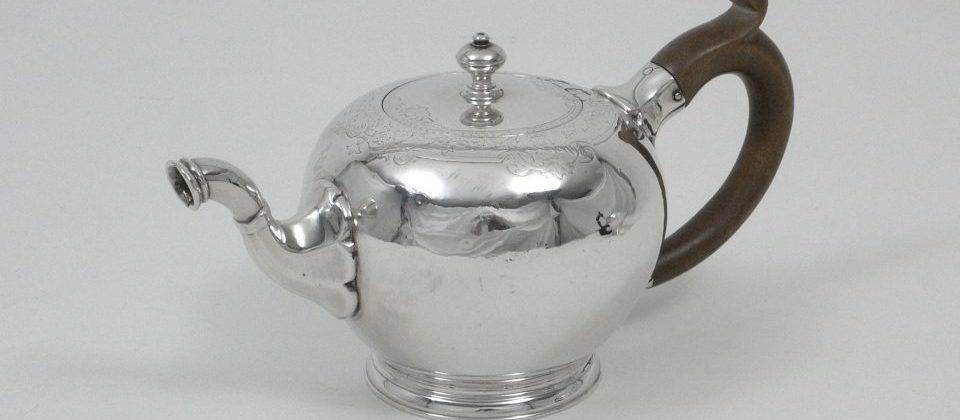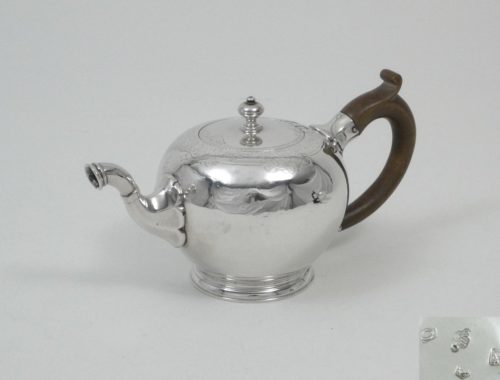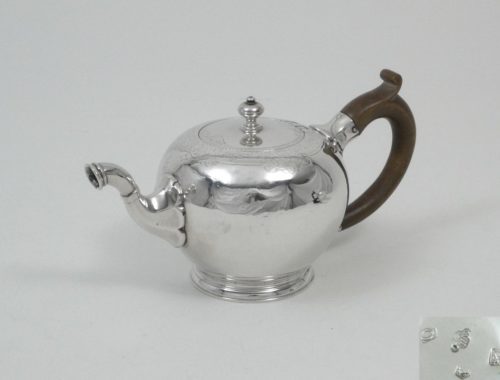Object Number: #909
London 1731/2
Maker: William Darker
City hallmark: leopard’s head crowned for London (Jackson 1921: 85)
Maker’s mark: monogram “WD” with a rotary circle in a shield for William Darker (Jackson 1921: 185; Grimwade3 Nr. 3079/S. 218)
Sterling mark: Lion passant en face (Jackson 1921: 85)
Date-letter: “Q” in a pointed shield for 1731/2 (Jackson 1921: 85)
Detailed Information
The round teapot is standing on a round, profiled standing ring. The shoulders and lid are adorned with an engraved foliage and strapwork frieze. The lid is flat and hinged. A cast baluster finial crowns the lid. The S-form, short spout has strongly profiled rims and its basis has a curved design. The ear-shaped, wooden handle is applied on edged and round bridges.
The type of round teapot in English silver appears after the pear-shaped teapots and is influenced by the so-called boccaro or buccaro earthenware from China. The name “boccaro” comes from Spanish and Portuguese and was used for the imported earthenware from Mexico, Chile and Peru. The name applied also to the Chinese, red and brown Yixing earthenware (later Ming-period) imported from China. The present teapot features a fine, discretely decorated example of this style.
Maker: William Darker is born in Leicester as the son of John Darker. In 1711, he began his apprenticeship to Richard Bailey and became a master-maker on the 4th December 1718 (Grimwade 1990: 484).
Literature
Grimwade, Ar., London Goldsmiths 1697-1837. Their marks and lives from the original registers at Goldsmiths’ Hall and other sources, GB: Faber and Faber, 1990
Hernmarck, Carl, Die Kunst der europäischen Gold- und Silberschmiede von 1450 bis 1830, C.H. Beck Verlag: München, 1978
Jackson, Ch., J., English Goldsmiths and their marks, London: MacMillan and Co. Limited, 1921




